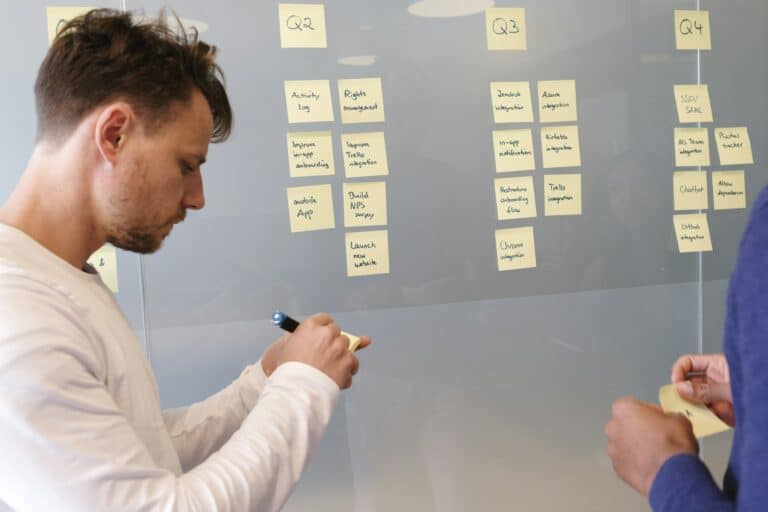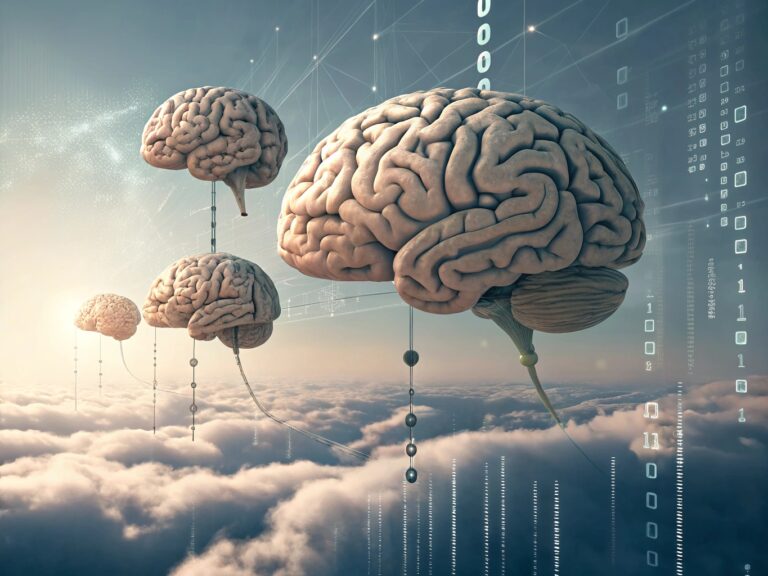Key Facts at a Glance: ADHD-Friendly Task Managers for Neurodivergent Productivity
- Task management apps built for ADHD must accommodate executive dysfunction, not punish it—featuring flexible systems that adapt to variable energy levels and working memory limitations
- Body doubling increases productivity by up to 40% through virtual or in-person accountability, with platforms offering structured co-working sessions
- Energy-aware scheduling outperforms traditional time-blocking for neurodivergent users who experience fluctuating focus capacity throughout the day
- Visual organization systems reduce cognitive load by up to 30%, using Kanban boards, color-coding, and timeline views instead of overwhelming text lists
- Micro-chunking combats task initiation paralysis by breaking projects into steps small enough that executive dysfunction cannot resist starting
- Gamification triggers dopamine pathways crucial for ADHD motivation, with reward systems and progress tracking maintaining engagement
- AI-powered tools now automatically prioritize tasks, estimate time requirements, and provide smart reminders that learn from user behavior patterns

AI for neurodivergent productivity is not just a hype: ADHD-friendly task managers are becoming a helpful measure for those who struggle with attention issues or hyperactivity. Image credit: Airfocus via Unsplash, free license
Managing productivity with ADHD requires more than willpower or generic advice about using planners. Traditional task management applications fail neurodivergent users because they either offer too little flexibility to match unique thought patterns or overwhelm with excessive complexity. The neurodivergent brain operates fundamentally differently, with variable executive function, interest-based motivation systems, and time perception challenges that standard productivity tools ignore.
According to a survey of 1,859 adults with ADHD, 56.59% struggle with procrastinating important tasks, while 42.28% have difficulty resisting distractions, and 31.35% cannot accurately estimate task duration. These challenges stem from executive dysfunction—the brain’s impaired ability to manage attention, regulate emotions, prioritize effectively, and maintain working memory under cognitive load.
Modern AI-powered task managers now address these specific neurological differences. These applications incorporate features that external structure provides, reduce decision fatigue, accommodate fluctuating energy levels, and celebrate small accomplishments to trigger dopamine rewards. The right digital tool becomes an extension of executive function rather than another source of guilt when systems inevitably break down during low-capacity periods.
Understanding Why Standard Productivity Tools Fail ADHD Brains

Nowadays, AI software successfully replace manual task organization methods and older software tools. Image credit: Airfocus via Unsplash, free license
Traditional productivity advice assumes consistent access to executive functions like planning, organizing, and self-regulation. It presumes that motivation generates through willpower alone, that visual clutter barely impacts cognitive performance, and that time feels linear with accurately estimable task durations. None of these assumptions hold for neurodivergent minds.
ADHD brains operate on an interest-based nervous system rather than an importance-based one. Motivation ignites through novelty, challenge, urgency, or personal interest—not because a task appears on a to-do list marked “high priority.” This explains why someone with ADHD might hyperfocus for eight hours on researching obscure historical facts while completely avoiding a critical work deadline.
Working memory limitations mean that traditional list-based systems become overwhelming rather than helpful. When mental RAM constantly runs at maximum capacity, adding seventeen tasks to a list creates paralysis instead of productivity. The brain cannot hold enough information simultaneously to prioritize effectively, initiate tasks, or remember why something mattered in the first place.
Time blindness—the inability to sense time passing accurately—makes traditional calendar blocking and scheduling nearly impossible. What feels like twenty minutes of focused work transforms into two hours without warning. Conversely, a task estimated at thirty minutes stretches across an entire afternoon because mental capacity depletes faster than anticipated.
Essential Features ADHD Task Managers Must Include
Flexible Organization That Adapts to Mental State
Effective ADHD task management platforms offer multiple views including Kanban boards, calendars, and lists, allowing users to switch perspectives based on current mental state or project requirements. This flexibility prevents the boredom and overwhelm that lead to abandoning organizational systems entirely.
Visual systems externalize priorities and reduce cognitive load. Color-coded categories, drag-and-drop interfaces, and spatial organization work with neurodivergent processing styles rather than against them. Physical or digital Kanban boards let users see everything simultaneously without requiring working memory to track task locations.
Intelligent Task Breakdown and Micro-Chunking
AI-powered task breakdown features deconstruct overwhelming projects into smaller, actionable steps, directly addressing executive function challenges related to task initiation. Instead of staring at “write quarterly report” and experiencing paralysis, micro-chunking transforms it into discrete actions: “open document template,” “add Q1 data,” “draft introduction paragraph.”
The key involves making steps absurdly small—so manageable that executive dysfunction cannot manufacture resistance. After completing one micro-task, momentum often carries forward naturally into the next action. This taps into behavioral activation principles from cognitive behavioral therapy, where small wins reduce task avoidance and build sustainable progress.
Energy-Aware Scheduling Over Rigid Time Blocking
Body doubling research indicates that social encounters activate dopamine pathways important for motivation and reward, with regular accountability check-ins increasing goal achievement likelihood from 25% to 95%. Similarly, energy-aware scheduling matches tasks to current capacity rather than forcing predetermined schedules.
High-energy periods should tackle complex creative work requiring sustained attention. Medium-energy windows handle routine tasks needing moderate focus. Low-energy or dysregulated states call for mechanical tasks requiring minimal decision-making—or permission to rest without guilt, recognizing that recovery itself enables future productivity.
This approach acknowledges that ADHD brains experience capacity fluctuations throughout days, weeks, and even within single afternoons. Fighting against neurological reality creates frustration and failure. Working with natural rhythms builds sustainable systems.
Celebration Systems and Dopamine Rewards
ADHD brains crave dopamine, the neurotransmitter regulating motivation, reward perception, and pleasure. Task completion celebrations, visual progress indicators, and gamification elements help users feel accomplishment and maintain engagement with organizational systems.
Effective reward systems provide immediate, tangible acknowledgment proportional to task difficulty. Virtual pets gaining items, achievement badges unlocking, progress bars filling, or cheerful mascots dancing all tap into neurological needs for external validation and motivation. These features transform mundane task management into engaging experiences that neurodivergent brains actually want to maintain.
Body Doubling: The Evidence-Based Productivity Game-Changer

The variety of tasks can be overwhelming for anyone. Image credit: SEO Galaxy via Unsplash, free license
Body doubling involves working alongside another person to boost productivity, with the companion’s presence helping individuals with ADHD stay focused, engaged, or motivated to complete challenging tasks. The strategy emerged in ADHD self-help literature during the 1990s and gained renewed attention during remote work expansions.
Research supporting body doubling effectiveness shows that upcoming accountability check-ins improve positive behaviors by 50%, while monotasking during body doubling sessions can improve productivity by up to 40%. The mechanism involves multiple factors working simultaneously.
How Body Doubling Works Neurologically
ADHD specialists explain that body doubling targets executive function by making unpleasant tasks more enjoyable, similar to listening to empowering music while working. The presence of another person provides gentle social pressure reducing procrastination without creating shame-based motivation.
For individuals with inattentive ADHD presentation, virtual body doubling provides light dopamine stimulation facilitating task initiation. For hyperactive presentations, another person’s calm presence serves as an anchor making sustained focus significantly easier. The physical or virtual cue provides subtle accountability against wandering thoughts and unnecessary detours.
A 2019 study suggests that social encounters activate dopamine pathways, and engaging with a body double may help boost dopamine levels crucial for ADHD motivation. Additionally, having someone present during challenging tasks transforms boring activities into social experiences, increasing inherent enjoyment.
Implementing Body Doubling Effectively
Effective body doubles should work quietly and independently without engaging directly, as instructing, supervising, or being interrupted expends energy equivalent to distraction. The ideal companion sits nearby reading, knitting, or working silently on their own tasks.
Virtual body doubling platforms connect users globally at any time. Options include dedicated services pairing members with accountability partners, live focus sessions with facilitated structure, co-working streams on video platforms, or simple video calls with friends committed to parallel work.
One ADHD coaching professional reports that clients find body doubling greatly improves productivity by supporting them in setting priorities, breaking down goals into 50-minute accomplishments, and maintaining necessary accountability. The technique works across contexts—from household chores and bill paying to academic assignments and professional projects.
Top ADHD-Friendly AI Task Managers

ADHD-friendly AI apps are also available for smartphones. Image credit: Hiki App via Unsplash, free license
Amazing Marvin: The Customization Champion
Amazing Marvin offers customizable productivity workflows through its Strategies feature, allowing users to completely tailor their experience by combining multiple methodologies. The platform starts simple, creating low entry barriers, then expands based on individual needs.
ADHD-specific features include habit tracking, reward tasks, procrastination warnings, “beat the clock” challenges, task jars for starting decision paralysis, and “eat the frog” labels. Users activate only strategies matching their current work style and energy levels. Pre-built Workflows automatically enable strategy combinations based on proven templates.
Calendar integration syncs multiple schedules, consolidating work, family, and personal events. The marshmallow mascot performs celebration dances after task completion, providing immediate dopamine rewards. Unlike many applications, Amazing Marvin displays completed tasks in daily views, reinforcing progress visibility and accomplishment feelings.
Pricing: $12 monthly or $96 annually
Platforms: Web, desktop (Windows, Linux, Mac), mobile (Android, iOS)
TickTick: The Focus Facilitator
TickTick excels at helping users focus on actual task completion rather than just tracking obligations, featuring built-in Pomodoro timers with time estimates and daily progress summaries. The Eisenhower Matrix visualizes tasks by importance and urgency, combating executive dysfunction by clarifying priorities instantly.
Time estimation features let users predict task duration, then track actual completion through Pomodoro sprints. Statistics dashboards reveal productivity patterns enabling optimization. Daily summary reports generate automatically, perfect for sharing with supervisors or personal reflection.
The free version includes habit tracking and Kanban views. Premium unlocks calendar synchronization and time-boxing capabilities, essential features for comprehensive ADHD time management.
Pricing: Free basic version; $35.99 annually for Premium
Platforms: Web, desktop (Windows, Linux, Mac), mobile (Android, iOS), Apple Watch
Sunsama: The Mindful Time Manager
Sunsama specializes in time management through daily planning flows featuring drag-and-drop or automatically scheduled time-blocking. Every morning, users review yesterday’s progress, sort overdue tasks, and build realistic daily agendas.
The platform prompts time estimates for every task, using that information to construct achievable schedules. Tasks can manually drag to calendar slots or automatically assign based on availability and priority. This mindful process benefits individuals who dive into overwhelming lists without setting reasonable expectations.
However, the system requires decent time-perception abilities. Users experiencing significant time blindness may struggle with accurate duration estimates during initial setup.
Pricing: $20 monthly, $16 monthly billed annually
Platforms: Web, desktop (Windows, Linux, Mac), mobile (Android, iOS)
Twos: The All-in-One Organizer
Twos combines tasks, notes, reminders, and events into single entries called “things,” organized by date and automatically rolling over uncompleted to-dos to the next day. Natural language processing adds tasks and reminders without manual formatting or mode switching.
AI-powered Smart Suggestions analyze lists and provide relevant search results, product listings, and helpful websites. The reward system grants coins for feature usage, streak maintenance, and community sharing. Uniquely, earned coins purchase upgrades instead of requiring real money—including list templates, AI features, tags, and customization options.
Pricing: Free basic; Twos Plus subscriptions $2, $5, or $10 monthly (all tiers unlock identical features)
Platforms: Web, desktop (Mac, Windows, Linux), mobile (iOS, Android)
Finch: The Gamification Master
Finch combines task management with mood journaling and meditation, helping users care for themselves and responsibilities by nurturing a virtual pet. Daily goals group into “self-care areas” promoting healthy habits while separating work from wellness to prevent burnout.
Morning routine notifications include mood check-ins and momentum-building goals. Throughout the day, reminders encourage stretching, hydration, and breaks—particularly valuable during hyperfocus periods when physical needs get ignored.
Rainbow stones earned through login streaks, task completion, and self-care quests purchase clothing, furniture, and adventures for virtual companions. Daily adventure conversations teach skills like compassion, confidence, and resilience while maintaining engagement through personality development.
Pricing: Free basic version; $9.99 monthly for Finch Plus
Platforms: Mobile (Android, iOS)
Goblin Tools: The Task Breakdown Specialist
Magic ToDo by Goblin Tools uses AI to break overwhelming tasks into manageable, step-by-step checklists with adjustable “spiciness” levels controlling breakdown granularity. Users control detail levels from basic overviews to incredibly specific action plans.
The Formalizer tool changes text tone and style, helping with communication anxiety by transforming chaotic thoughts into professional, technical, polite, or simplified formats. The Estimator provides realistic time frames combating time blindness. The Compiler tool analyzes message tone and intent, supporting clearer communication understanding.
The entire suite specifically targets neurodivergent challenges through focused, single-purpose solutions rather than complex all-in-one systems.
Pricing: Free web version; $1.99 one-time purchase for mobile apps
Platforms: Web, mobile (iOS, Android)
Focuzed.io: The Energy-Aware Scheduler
Focuzed.io aligns tasks with natural energy rhythms and promotes single-task focus through distraction-free views with calming interfaces built specifically for neurodivergent users. The platform learns energy highs and lows throughout days, syncing with calendars and wearable devices detecting peak focus periods.
Focus Mode strips screens to single tasks paired with optional calming visuals or background sounds. Rather than overwhelming task lists, the system presents one actionable item at a time, grounding attention and avoiding decision paralysis.
Smart reminders match cognitive states rather than fixed schedules. The tool guides attention mindfully rather than demanding rigid adherence to predetermined plans.
Pricing: Starting at $9 monthly with unlimited tasks and enhanced analytics
Platforms: Web, mobile applications
Reclaim.ai: The Automatic Calendar Optimizer
Reclaim.ai automatically schedules tasks based on availability and priorities, with smart routines protecting time for habits like breaks, meals, and deep work. Once users list tasks and habits, the AI finds optimal time slots, dynamically adjusting when obligations shift.
The platform carves out and defends focused work time, walking sessions, lunch breaks, and other priority activities. Visual time-blocking happens automatically without manual daily management, making it ideal for individuals who struggle with time estimation or reactive work patterns.
Google Calendar integration keeps everything synchronized. The system reshuffles intelligently when meetings appear or deadlines change, maintaining realistic schedules without requiring constant manual reorganization.
Pricing: Free basic plan; paid plans from $8 monthly
Platforms: Web-based with calendar integration
Tiimo: The Visual Planner
Tiimo creates visual daily timelines through color-coded schedules, addressing time blindness by showing not just what needs doing but when and for how long. The AI-powered task breakdown deconstructs overwhelming projects into smaller actionable steps, directly tackling task initiation challenges.
Focus timers and mood check-ins create holistic support beyond basic task management. Customizable colors, icons, and layouts build motivation by reflecting personal work preferences. Widgets keep schedules visible without opening applications, enabling quick check-ins without breaking concentration.
The platform’s brain dump feature transforms scattered thoughts into clear steps and priorities through AI analysis, requiring just one click to convert chaos into actionable plans.
Pricing: Free essential features; 7-day Tiimo Pro trial with premium tools
Platforms: Web, desktop, mobile (Android, iOS), smartwatch
Notion with ADHD Templates: The Flexible Workspace
Notion’s extreme customizability combined with ADHD-specific community templates and AI assistance creates powerful second-brain systems. The AI helps summarize notes, rewrite text, and break down tasks when structuring feels overwhelming.
ADHD-tailored layouts include dashboard views with calming color schemes, collapsible sections reducing visual clutter, and hyper-minimal task boards. Visual organization options span boards, calendars, toggles, and timelines. The extensive community shares proven ADHD-friendly setups, eliminating setup paralysis.
Notion works best for individuals who enjoy visual structure with flexibility and don’t mind initial configuration. The result becomes deeply personal, adapting to unique needs through both AI and community wisdom.
Pricing: Free personal plan; AI features and premium start at $10 monthly
Platforms: Web, desktop, mobile (iOS, Android)
Neurodivergent Brain Hacks That Transform Productivity
External Working Memory Systems
When internal working memory proves limited, reliable external systems offload information storage and retrieval without adding cognitive burden. Voice notes capture thoughts before evaporation. Speech-to-text converts ideas into organized documentation. AI transcription transforms recorded rambling into structured content.
Visual dashboards keep tasks constantly visible, combating “out of sight, out of mind” tendencies. Physical Kanban boards with movable task cards provide tactile engagement. Digital equivalents offer template structures and infinite customization. Whiteboard walls ensure nothing disappears from awareness.
Brain dump stations designate specific places—digital or physical—where thoughts land without requiring immediate organization. Sorting happens later when executive function capacity exists, preventing initial capture from becoming another blocked task.
Stimulation Regulation for Optimal Focus
Neurodivergent brains often require specific stimulation types achieving optimal focus states. Too little stimulation causes understimulation and attention drift. Excessive stimulation triggers overwhelm and shutdown. The goal involves finding individual focus zones.
Functional audio tools provide consistent auditory input supporting sustained attention. Unlike regular music causing habituation, algorithm-generated patterns maintain effectiveness long-term. Different modes support various states: focus sessions for deep work, relaxation during breaks, sleep support for ADHD-related insomnia.
Physical fidgeting provides necessary stimulation helping many neurodivergent individuals maintain focus. Fidget cubes, textured objects, chewing gum, crunchy snacks, standing desks, and balance boards all serve legitimate attention-regulation purposes. Movement breaks every 15-20 minutes accommodate neurological needs rather than conforming to standard 50-minute work blocks.
Time Management for Time Blindness
Visual time tools show the “size” of remaining time intuitively rather than requiring abstract clock interpretation. Time Timer devices display shrinking colored sections. Apps provide visual countdowns and progress bars. Physical hourglasses or sand timers track short task durations through tangible observation.
Reverse engineering deadlines works better than forward planning when time estimation proves impossible. Identify absolute deadlines, subtract significant buffer time (double or triple neurotypical estimates), work backward to create milestone points, then set reminder alerts at each checkpoint.
Time bracketing with flexible windows replaces rigid scheduling. “Morning project time” instead of “9-11 AM: Task X” allows task switching within windows based on current executive function. Using energy levels rather than clock time structures days according to neurological reality.
Creating ADHD-Friendly Systems That Actually Last
The Minimum Viable Routine
Many neurodivergent individuals abandon routines because excessive complexity or rigidity makes maintenance impossible. Minimum viable routines strip down to critical actions maintainable even during low-function periods.
Morning MVR might include: take medication, drink water, put on clothes. That’s complete. Everything else becomes bonus. The goal prioritizes consistency on essential actions over perfection across twenty habits. Evening MVR could involve: set alarm, charge phone, lay out tomorrow’s clothes. Build from these foundations only after MVR becomes genuinely automatic—potentially requiring months, not weeks.
Anchor Habits and Transitional Objects
Anchor habits link new behaviors to existing ones, reducing task initiation executive function requirements. “After pouring coffee, start focus music” connects established morning routines to new productivity practices. “When sitting at desk, open task manager” automates workspace preparation.
Transitional objects provide physical state-change signals. Specific hoodies mean “work mode.” Particular mugs accompany focus time only. Lighting changes indicate different day parts. These external cues reduce self-initiation burden by creating environmental triggers.
The Doom Box Strategy
Executive dysfunction creates “doom piles”—accumulations of items lacking designated homes. The Doom Box strategy provides temporary containment rather than requiring immediate decisions.
Designate one box, basket, or drawer. When unsure where something belongs, it enters the Doom Box. Set weekly processing time for sorting contents. During low-function periods, skip processing—the box contains mess rather than letting it spread. This prevents “where does this go?” paralysis from derailing entire days while maintaining imperfect but sustainable organization.
Managing Hyperfocus: When Your Brain Won’t Stop
Hyperfocus—intense concentration on interesting tasks—appears as an ADHD superpower but requires active management preventing burnout and neglected necessities.
Hyperfocus Guardrails
Set non-negotiable boundaries through physical alarms for medication, meals, and hydration. Designate friends to text checking lunch consumption. Program automatic lighting changes at specific times. Configure apps force-closing after set durations.
Before entering hyperfocus, set up necessities nearby—water, snacks, bathroom trips completed, others informed of unavailability. Multiple alarms compensate for ignored first warnings. Build buffer time after intense focus anticipating “hangover” feelings. Avoid scheduling demanding tasks immediately following hyperfocus periods. Allow time for physical movement and sensory reset.
Channeling Hyperfocus Strategically
When possible, direct hyperfocus toward high-priority work by front-loading important tasks during peak energy, creating environments encouraging priority-task hyperfocus through removing other interesting distractions, and using body doubling to guide attention toward specific tasks.
Recognize that hyperfocus control remains imperfect, but conditions can encourage landing on useful tasks more frequently.
The Self-Compassion Component
Shame does not function as a productivity tool—it kills productivity instead. Every system described here will fail sometimes, not because of personal failure but because executive dysfunction inherently varies. Good days and terrible days both occur. Strategies working brilliantly for weeks suddenly stop functioning without warning. Forgetting to use memory-support tools happens regularly.
This reality reflects neurology, not moral failure. Neurotypical productivity measures success through consistent daily output, meeting every deadline, and maintaining all routines. Neurodivergent productivity success looks different: completing truly important tasks (even if not everything), maintaining baseline functioning (medication, meals, sleep), using tools and accommodations without shame, recognizing rest needs without guilt, and celebrating wins appropriate to actual capacity.
Accept variable capacity. Some days provide executive function; others don’t. Plan for both realities. Create sustainable minimums—absolute baselines keeping life functional—protecting those before optimizing anything else. Release neurotypical timelines, recognizing that tasks may require more time than peers need. That represents data, not failure. Use all available tools—accommodations, medication, therapy, technology, human support—without apologizing.
Conclusion: Building Your Personal Productivity Stack
Every neurodivergent brain operates differently. What works brilliantly for one individual might completely fail for another. The goal isn’t implementing every strategy from this guide but discovering personal productivity stacks through experimentation.
Start with one tool or strategy addressing your biggest current frustration. Test for at least two weeks before adding another element. Track what actually happens—not aspirational outcomes but real usage patterns. Which tools get reached for naturally? Which gather digital dust? What helps during low-function periods?
Adjust based on reality rather than wishes. Systems requiring consistent executive function for maintenance don’t work for executive dysfunction. Choose tools accommodating actual brains, not aspirational versions. Over time, you’ll develop strategy collections matching specific neurology, work styles, and life situations. This toolkit will evolve continuously—that’s exactly right.
Focus on 2-3 core tools maximum: one task management approach, one time awareness strategy, and one focus support system. More tools mean more maintenance, more decision fatigue, and more breakdown opportunities. The best productivity application remains the one used consistently—even if just the basic notes app paired with strategic body doubling.
Neurodivergent productivity isn’t about becoming neurotypical. It’s about building life and work styles honoring how brains actually operate while practicing kindness throughout the process. Your brain isn’t broken. You’re just using the wrong manual. This guide helps write the correct one.
If you are interested in this topic, we suggest you check our articles:
- Zeligate: The Best Privacy-focused AI for streamlined Hiring and Workforce Management
- Creative Social Media Content with AI Editing
- Reach New Levels of Business Productivity through Motion AI
Sources: ZapierKlarity, ADDitude, Fluidwave, ADDA, Healthline, Zapier, Deepwrk, Psych Central, Usevoicy, Focuzed, Brain.fm, ADHD Goat
Written by Alius Noreika

